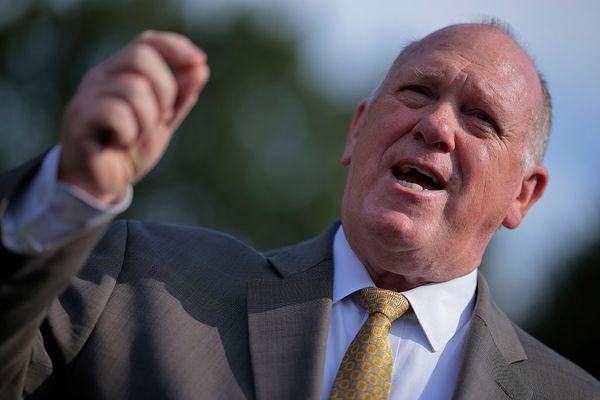As Sri Lanka's economy unravels before our eyes, one must ask how this could happen in a country historically known for its high standard of living and stable economy. Sri Lanka's achievements go back decades, giving it a per capita GDP that is 70% higher than India's, and a life expectancy at birth of 77 years, compared to 73, 70, and 67, in Bangladesh, India, and Pakistan, respectively.
But now Sri Lanka's economy is in free fall. The proximate causes of the crisis are clear enough. Problems stemming from international factors such as Covid-19 and Russia's war in Ukraine were exacerbated by Sri Lanka's own policy mistakes.
In 2019, then-president Gotabaya Rajapaksa, who recently now fled the country, announced a round of mindless tax cuts, depriving the state of sorely needed revenue. Then in 2021 his government abruptly banned imports of chemical fertiliser and pesticides. While the aim of the policy was to stall foreign-exchange outflows, the main result was a dramatic reduction in domestic food production, leading to acute food shortages this year.
The coup de grâce was the government's ongoing effort to keep the Sri Lankan rupee artificially strong. Technically, Sri Lanka uses a "soft peg": Rather than being fixed by government diktat, the rupee-to-dollar exchange rate is allowed to float, albeit with occasional interventions by the central bank (buying and selling dollars) to prevent excessive fluctuations.
But charting the rupee-to-dollar exchange rate shows that the country's soft peg is a misnomer. For years, the exchange rate remained flat, roughly between 175 to 200 rupees (80-92 baht) to the dollar because, as economist Noah Smith explains, the Sri Lankan central bank was regularly selling dollars to prop up the rupee's value.
Yet starting around April of this year, the rupee began depreciating sharply. Within months, the exchange rate had fallen to 350 rupees to the dollar, and the central bank's dollar reserves had all but vanished.
Sri Lanka defaulted on its foreign debt in May. We now know that, rather than turning to the International Monetary Fund (IMF), whose rescue programs are conditional on tough policy reforms, it approached China for a fresh loan when its coffers were approaching empty. But this merely increased its debt by another US$3 billion (110.1 billion baht) and ensured that its inevitable crisis would be even bigger when it eventually arrived.
China's strategy vis-à-vis Sri Lanka (and other developing countries, like Ethiopia) echoes the approach taken both by earlier colonial powers and by rural moneylenders in developing countries. As Amit Bhaduri showed in a classic 1977 paper in the Cambridge Journal of Economics, rural informal moneylenders typically do not worry about the borrower defaulting; rather, they worry about the borrower not defaulting, because then they cannot turn a bigger profit by confiscating his collateral (usually his land).
Consider Hambantota Port, the pet project of Mahinda Rajapaksa, Sri Lanka's president between 2005 and 2015 (and Gotabaya Rajapaksa's brother). Funded largely with Chinese money, the port opened in 2010 on Mahinda's birthday. But when Sri Lanka later failed to repay the debt, this "gift" became collateral to be confiscated. China now has a 99-year lease on the port.
Sri Lanka's politics sowed the seeds for today's economic crisis. The Rajapaksa-led government became increasingly authoritarian after defeating the Liberation Tigers of Tamil Eelam and ending Sri Lanka's decades-long civil war in 2009. It eroded the country's democratic institutions, persecuted minorities, and waved away accusations of war crimes.
For a short while, it seemed possible that the Rajapaksa government could deliver economic growth and stability. But as it embraced populism, it soon became clear that crony capitalism would be Sri Lanka's fate.
When the Rajapaksa government returned to power in 2019, it was riding a wave of support that it sought to sustain with ill-advised economic handouts. But its big tax cuts met with strong criticism. On October 30, 2019, former finance minister Mangala Samaraweera warned on Twitter that, "Gota's tax plan wants to set Sri Lanka on an express train to bankruptcy".
Even if the Rajapaksas do not regain control by proxy, there are other risks. The IMF cannot offer a rescue programme until there is a viable government with which to negotiate.
But both the Fund and the Paris Club of sovereign creditors need to suspend some of their bureaucratic rules to help Sri Lanka through this acute phase of the crisis. Failing that, a humanitarian disaster is likely. ©2022 Project Syndicate
Kaushik Basu, a former chief economist of the World Bank and chief economic adviser to the Government of India, is Professor of Economics at Cornell University and a non-resident senior fellow at the Brookings Institution.







